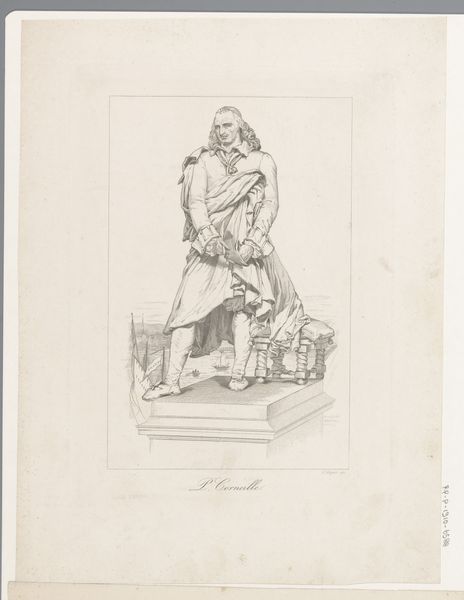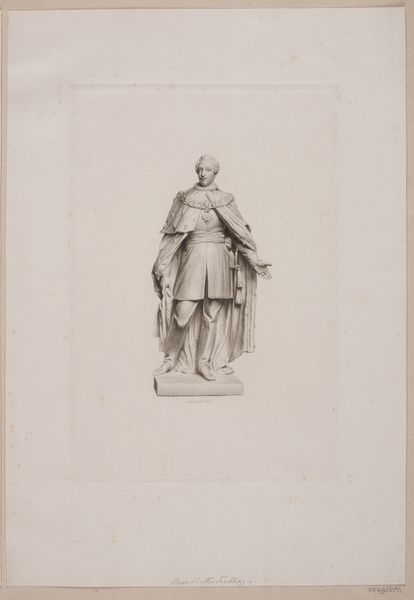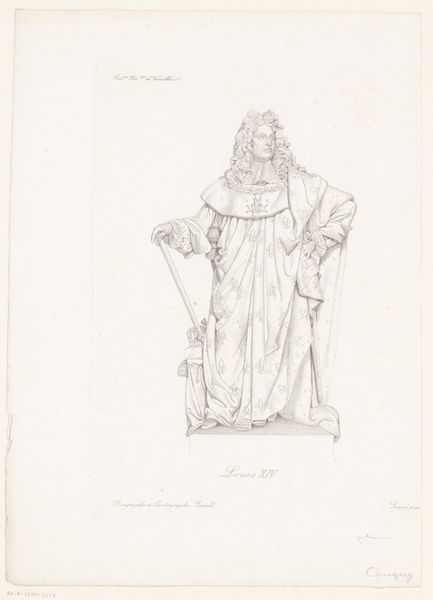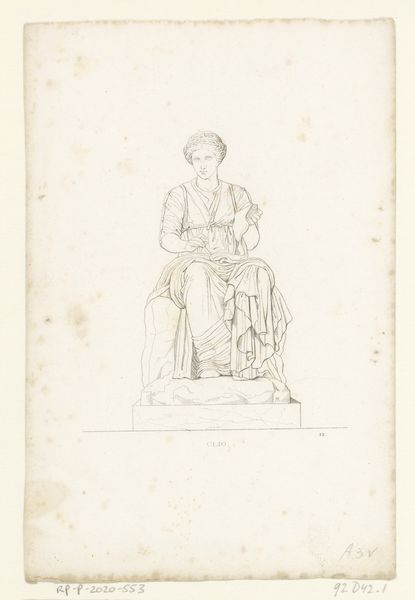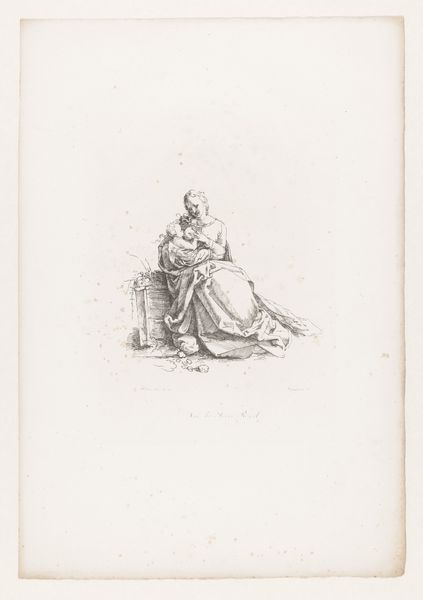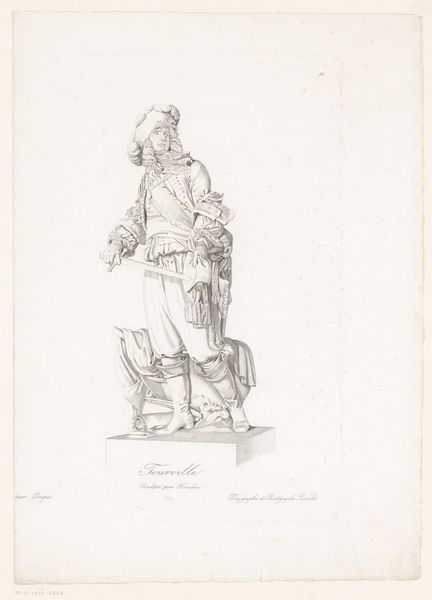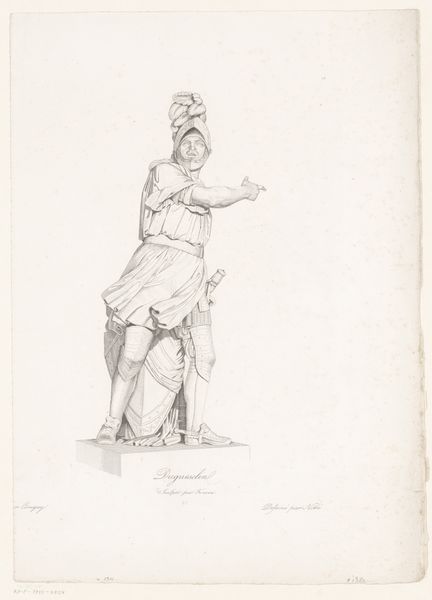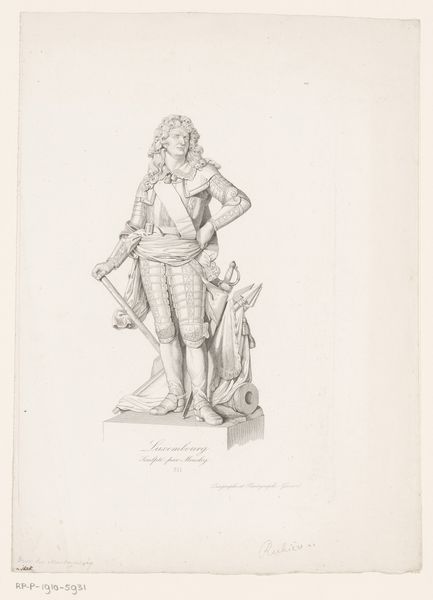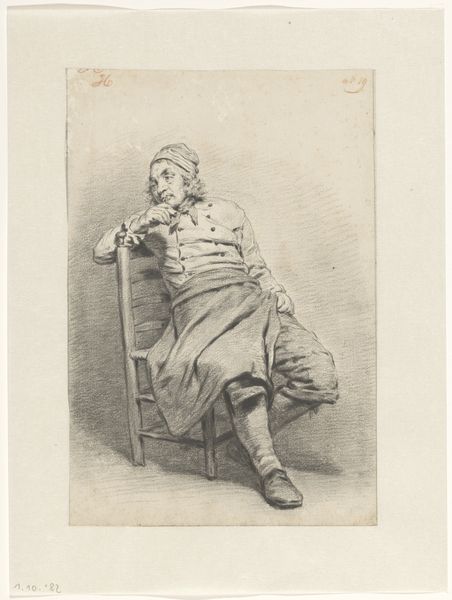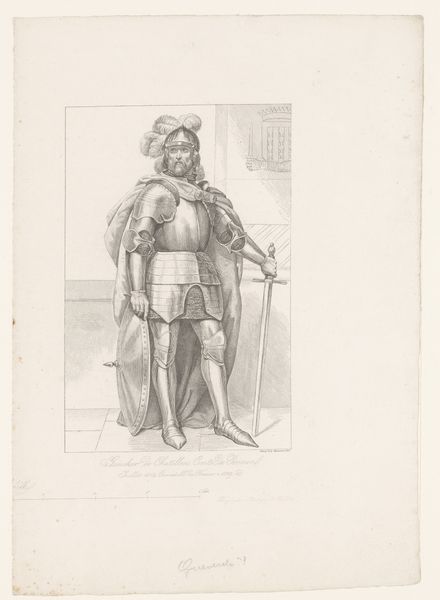
drawing, sculpture, pencil
#
portrait
#
drawing
#
classical-realism
#
sculpture
#
pencil
#
history-painting
#
academic-art
Dimensions: height 269 mm, width 239 mm
Copyright: Rijks Museum: Open Domain
Editor: So, here we have an 1838-1841 pencil drawing, "Portret van Hendrik IV," by Edme Jean Ruhierre. It depicts a sculpted figure of King Henry IV. The drawing itself is so delicate. It feels almost… fragile. What do you see in it, what's your reading of it? Curator: Ah, yes, a dance between the monumental and the ethereal! I love the way the artist captured not just the likeness, but the *idea* of Henri IV. Think about it: he's rendered as a sculpture, already an idealized representation, and then filtered through Ruhierre’s artistic vision, made further distant from any kind of reality. Notice how the starkness, this pale ghost, allows the story of Henry IV to become, well, *our* story? Editor: That makes me think about historical memory… how the story becomes more about the *idea* of Henry than who he actually was. Curator: Precisely! The gentle pencil strokes serve to soften any harsh edges and emphasize the humanity – even the vulnerability – beneath the armor. Almost as though we’re seeing Henry IV not as a king on a pedestal, but as a thoughtful man pondering heavy decisions. Do you get that sense, too? Editor: I think so, especially looking at his face. He does seem contemplative, not overtly powerful. More… human, like you said. It is pretty amazing to think of an image depicting a statue of a historical figure—the levels of artistic interpretation are quite interesting. Curator: Layer upon layer! And perhaps, the choice of pencil is itself a subtle comment—a material so humble to capture such an… august subject. Perhaps even an artist admitting that history is never fixed, but is an ephemeral projection. So fascinating. Editor: Wow, I hadn’t considered the pencil medium itself contributing to that sense of...transience. That’s really interesting. Curator: These subtle visual elements of light and shadow, strength and frailty, lead us to ask big questions about how we engage with the past, wouldn’t you agree? Editor: Absolutely. Thanks. That’s given me a lot to think about regarding portraiture and its purpose, as well as materiality!
Comments
No comments
Be the first to comment and join the conversation on the ultimate creative platform.
